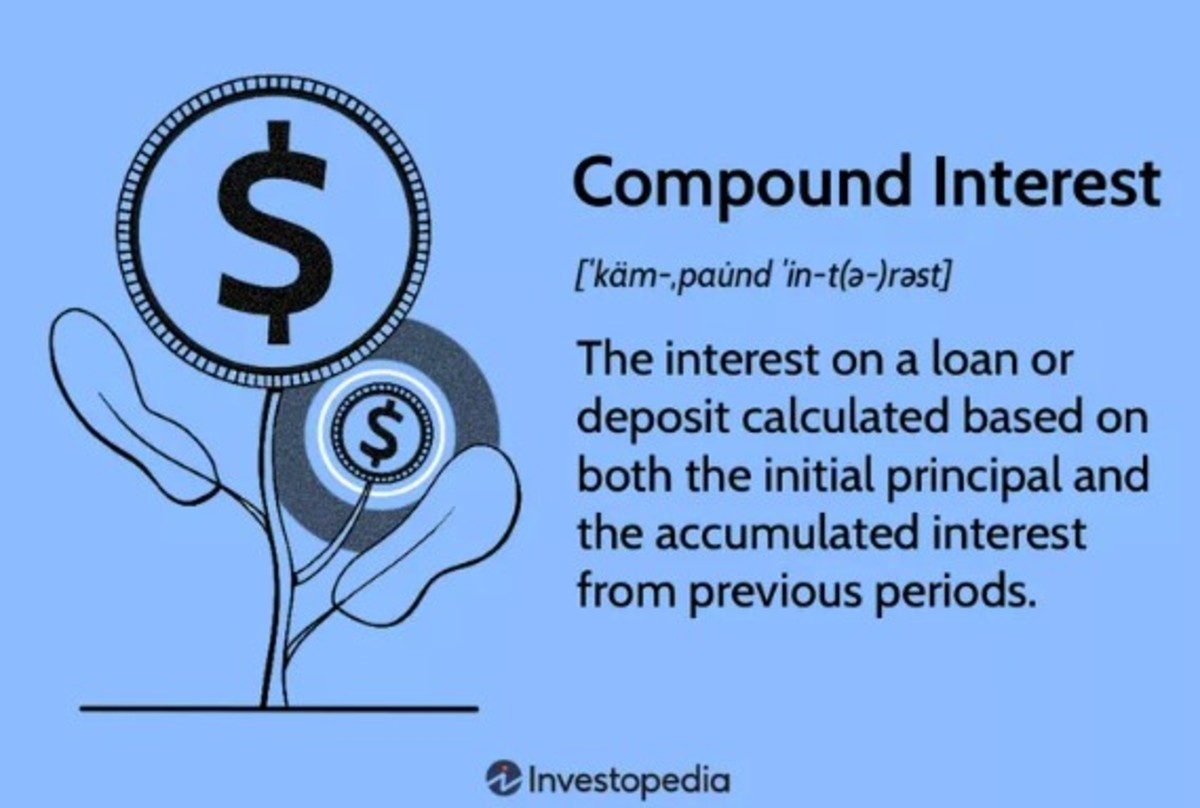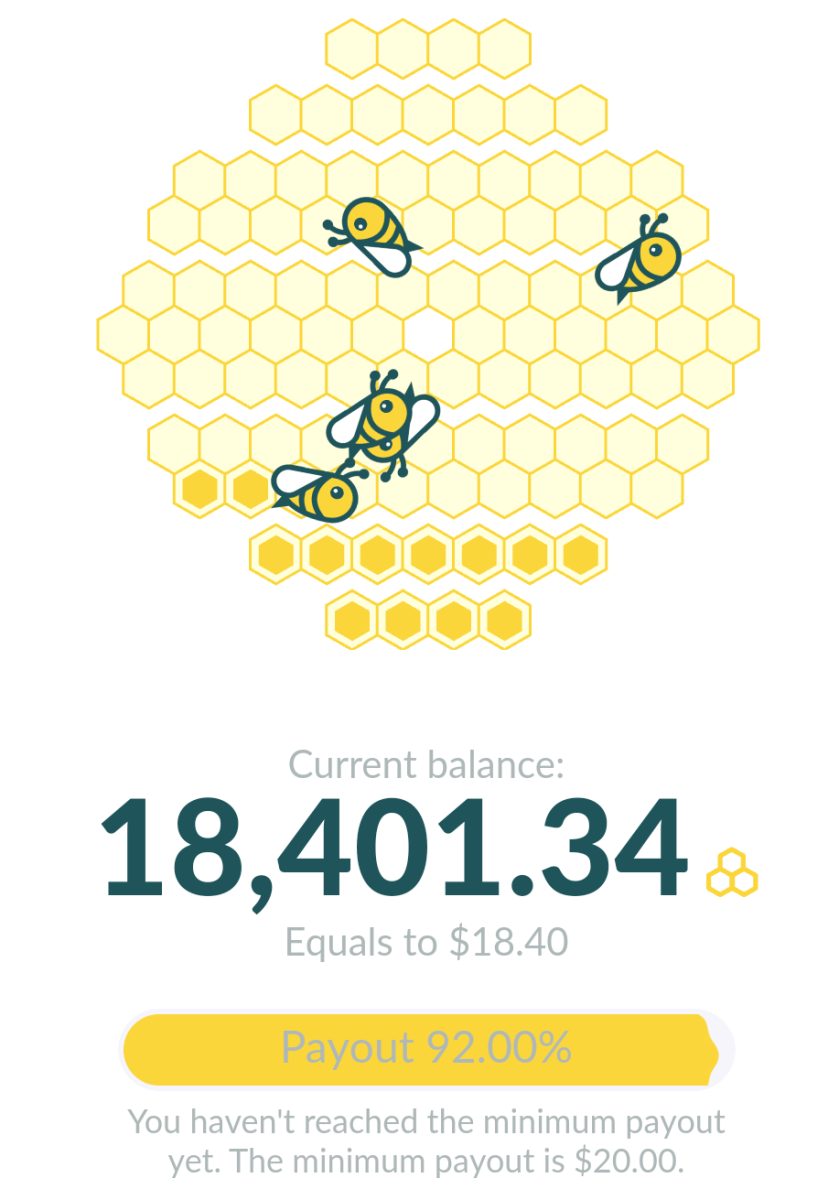The Granddaddy of Passive Income Streams: Getting Rich by Investing Dividends
Welcome!
Thanks for visiting my hub on dividends - the original passive income! Here, I will focus on some companies that offer fantastic income through dividends and let you see what you could have earned - or may earn in the future. Hopefully, this will encourage you to view dividends as another source for generating wealth in the long term, as well as an on-going generator of passive income.
(And if you want to see wome real-world outcomes from this type of investing, visit my hub on Everyday Millionaires: How Ordinary People Got Rich.)
How to Get Rich with Dividends

What are Dividends?
Dividends are regular payments made by a corporation to its shareholders. Although usually paid quarterly, dividends can be declared at any time by a company's Board of Directors. Most companies will allow you to take the dividends as cash, or reinvest them in order to buy more shares. Because the payments are made regularly, dividends can - and should - be a part of everyone's income stream, although I favor reinvesting dividends in order to buy more shares of stock. As you will see from the stories below, dividends can indeed make you rich.

Johnson & Johnson: Great Dividends for Passive Income
We all know Johnson & Johnson, the mega-conglomerate that produces everything from medication to baby shampoo. But even more impressive that their vast array of products is their stock and it's dividend.
Assume that on January 30, 1982, you decide that you're going to leap into the stock market. You've got $1000 to invest, and you're trying to decide what's a good company to put your money into. Looking around your house, you see that you've got some Rolaids in your medicine cabinet, some Band-aids in the first-aid kit, and some Johnson&Johnson baby shampoo for you infant son. Recognizng all of these as J&J products, you figure that you'll be putting money back in your own pocket with some stock in the company, so you plop down your thousand bucks and get a grand total of 27 shares in return, each of which pays a split-adjusted quarterly dividend of 1.4 cents (yes, cents!) per share.
Fast-forward to today: reinvesting all dividends up to this point, your original 27 shares have grown to 601 shares worth a whopping $39,445 - almost 40 times your original investment. Moreover, the quarterly dividend is now a robust 57 cents per share, meaning that you are paid $342.57 (that's from $0.57 x 601 shares) every quarter. Put another way, you're collecting $1,370.28 in dividends every year. Your annual dividend payout is more than you ever put into the stock! (And you'll get it every year...)
Now let's assume that you're late to the party. Instead of making your investment in J&J in 1982, you wait exactly 10 years later - until January 30, 1992. Your $1K investment would have bought you 9 shares back then, and a rinky-dink split-adjusted quarterly dividend of 5 cents per share. But today, 20 years later, following stock splits and reinvestment of dividends, your 9 shares have grown to 103. And that 5 cent quarterly dividend? It's now $0.57. So you're now getting $58.71 per quarter - or $234.84 annually - in dividends. It ain't the $1370 per year we saw above, but it's a guaranteed 23% annual return on your original $1000 investment. World-class money managers aren't able to duplicate that!
(You can confirm my numbers with the Johnson & Johnson Investment Caculator.)

Procter & Gamble: How'd You Like a 78% Annual Return?
Procter & Gamble is the well-known manufacturer of dozens of consumer products, from Duracell batteries to Tide detergent (and probably most other detergents you can think of). They are quite the commercial powerhouse and tend to sell products in good times and bad. (People don't stop bathing during bad times - most of them, anyway - and they keep washing clothes as well.)
Going with the same scenario as before, let's assume around the end of January 1982, you decide you'd like $1000 worth of P&G stock. On January 29 of that year, the stock closed at a price of $85.25, meaning you would have perchased 11.73 shares for your money, accompanied by a split-adjusted quarterly dividend of 10 cents per share.
Leaping forward to today, your original 11 shares have grown into 375.37 shares of stock, each paying a quarterly dividend of 52.5 cents. In other words, you're getting dividend payments of roughly $197 per quarter - that's $788 per year (a 78.8% annual return) - all without investing another penny! And did I mention that the stock is now worth approximately $23,650.00?
(Please feel free to confirm my numbers with the Procter & Gamble Stock Calculator. Historical stock price and dividends were obtained from Yahoo Finance.)
Wal Mart: A Retail Giant with Giant Dividends
Everyone has heard of Wal Mart, the giant retailer that sells in almost every corner of the globe. The company has been great at making sales to customers, but how has it treated it's investors? Let's find out:
As before, you take $1000 of your hard-earned cash, but this time - noticing that your spouse does all of your shopping at Wal Mart - you decide to get something out of the deal by buying some stock in Sam Walton's company. On January 29, 1982, your $1K nets you roughly 23.6 shares at a cost of $42.38 each. The split-adjusted dividend at the time is .07 cents. (Yes, .07 cents; that's not even a penny - it's seven-hundredths of a penny!)
Looking at your Wal Mart stock today, you are pleased to see that your original 23 shares have bulked up and are now 3,020.65 shares worth (drumroll, please...) $183,413.81! And the dividends? You're now collecting $0.365 quarterly for each share; that's a little over $1100 per quarter, or $4400 per year. Put another way, you're making back more than your entire up-front investment every 3 months!
(My numbers can be checked with theWalMart Investment Calculator. Historical stockprices and dividends are from Yahoo Finance.)
Dividend Poll
Do you own any dividend-paying stocks?
Summary and the Dividend Aristocrats
In short, we can see that dividends are a great source of passive income that are often overlooked in this era of fast money. However, as with the tortoise and the hare, slow and steady wins the race. There's no law that says you have to make all your money now, just like you don't have to earn in all one single, solitary profession or via one particular website. Plus, it's wise to diversify your options in terms of income sources; it's a practice that can pay big dividends in the long run (no pun intended). (And if you want to juice up your returns a little, visit Making Money with Stock Options and Option Trading.)
If you are interested in investing for dividend income, be sure to check out the Dividend Aristocrats, which are stocks that have increased their annual dividend payout for at least 25 consecutive years: 2012 Dividend Aristocrats. (On a side note, the thee companies profiled in this hub are all Dividend Aristocrats. Others include AT&T, Clorox, Medtronic, Franklin Resources, AFLAC, Exxon Mobil, PepsiCo and McDonald's.)
Finally, just for kicks and grins, see how much your invest would have grown to in various stocks If You Had Only Invested Then.












